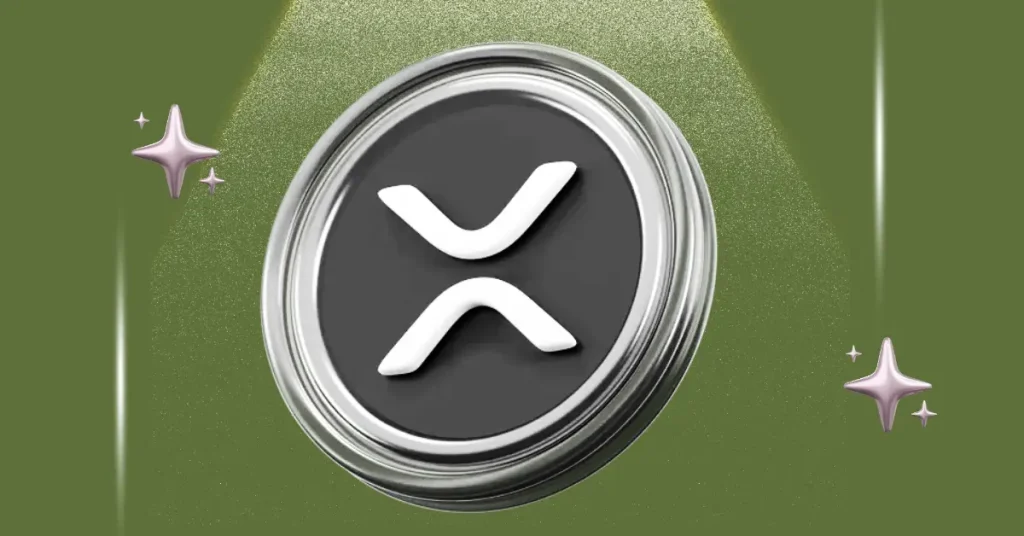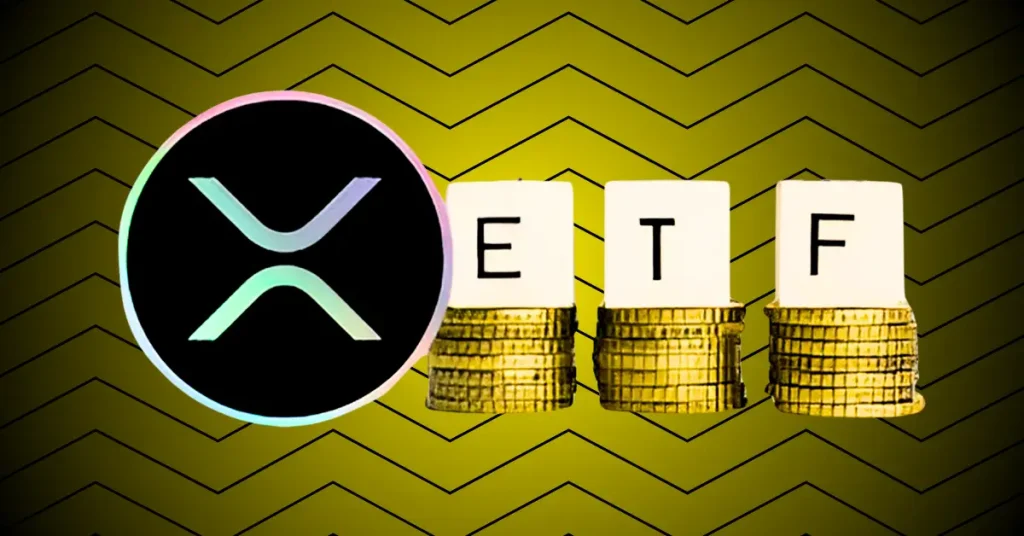
The post What is Polkadot Blockchain? Envisioning Web 3.0 appeared first on Coinpedia - Fintech & Cryptocurreny News Media| Crypto Guide
In recent years, blockchains have become increasingly popular. And Interoperability amongst chains has remained a significant roadblock. This is where Polkadot gained traction by introducing interoperability.
PolkaDot is one of the in-demand cryptocurrency blockchains worldwide. The fundamental capabilities and functionality of cross-chain fuels blockchain adoption.
It claims itself as the next-generation blockchain protocol, with the ability to link numerous specialized chains into a single global network.
Polkadot aspires to break Internet monopolies and empower individual users with a heavy focus on building infrastructure for Web 3.0 and was founded by the Web3 Foundation.
Let’s binge to understand more about this unique blockchain!
What is Polkadot?
It can be described as an open-source protocol built for everyone. It enables independent chains to securely exchange messages and conduct transactions with each other without the need for a trusted third party.
The Polkadot blockchain was created to allow Substrate-based blockchains to scale independently by facilitating cross-chain communication. The substrate is an open-source platform that allows you to quickly create highly configurable blockchains.
In the Polkadot ecosystem, each independent blockchain is known as a parachain (parallel blockchain), while the main chain is known as the Relay Chain.
Substrate, a framework for developing cryptocurrencies and decentralized systems, allows any developer, company, or individual to create their own parachain.
Polkadot is designed to be “scalable.” The technology is deemed scalable and extensible on a wide scale since all components of each parachain can be carried out in parallel by different parts of the network.
The native cryptocurrency of Polkadot is known as ‘DOT’. The DOT token serves three purposes: network governance, operation, and bonding.
The protocol is completely controlled by Polkadot token holders. Participants in the relay chain have full access to all rights, including the ability to manage extraordinary occurrences such as protocol upgrades and corrections.
History of Polkadot Network
Dr. Gavin Wood, one of the co-founders of Ethereum and the developer of the Solidity smart contract language, is the creator of Polkadot. In mid-2016, Dr. Wood began working on his proposal to “create a sharded version of Ethereum,” and in October of that year, he produced the first edition of the Polkadot white paper.
The Web3 Foundation was launched in 2017 by Dr. Wood and Peter Czaban of Parity to promote Polkadot’s research and development as well as to manage its fundraising activities. Polkadot’s inaugural token sale was held in October 2017 at the Web3 Foundation in Switzerland, with cash distributed through a Spend-All Second Price Dutch Auction. The initial 10 million DOT (old) supply was sold for $145 million in slightly under two weeks, and the Web3 Foundation picked Parity Technologies to create Polkadot.
Dr. Wood and Jutta Steiner developed Parity Technologies, which is notable for managing the Parity Ethereum client as well as Substrate, the Polkadot programming framework.
The hacking of the Parity Wallet and associated fundraising efforts Someone permanently froze the funds in the Parity multi-sig contract ten days after the token sale concluded (Nov. 6, 2017), jeopardizing $90 million worth of ETH, almost 66% of PolkaDot’s token sale profits.
Polkadot and the Web3 Foundation indicated that the project was still on track to accomplish its development goals.
In a 2019 private token sale, the Web3 Foundation presumably collected extra funding to replace the lost funds. Polkadot wanted to sell 500,000 DOT (old) tokens at a $1.2 billion valuation, with each token priced at $120. The transaction was claimed to have been finalized in June 2019 at a “successful” valuation, despite the foundation not disclosing any details about the raise.
In the same year, Kusama was launched as an early, unaudited, and unrefined version of Polkadot that is intended to serve as a “canary” network for Polkadot to test governance, staking, and sharding in real-world scenarios. To promote engagement, Polkadot allocated 1% of the inaugural DOT supply to Kusama stakeholders.
Later in 2020, For its mainnet launch, Polkadot used a staggered rollout plan. On May 27, 2020, Polkadot’s first mainnet chain candidate, Phase 1, became live. It was the first step in a multi-stage rollout procedure outlined in the mainnet launch timeline for the project. Polkadot was first implemented as a Proof-of-Authority (PoA) network, which was overseen by six Web3 Foundation validators. The network eventually switched to its intended Nominated Proof-of-Stake (PoS) mechanism on June 1.
On January 18, 2020, Phase 2, DOT owners were allowed to claim validators slots and get staking compensation. Polkadot’s governance feature was released in Phases 3 and 4 in late July 2020, and the protocol was handed over to the community. On August 18, 2020, the final phase will enable DOT token transfers.
DOT reclassification Polkadot token holders voted to modify the denomination between DOT and its lowest unit, Plancks, by a factor of 100 in the network’s first formal community vote. This update took effect at block #1,248,328, which came on Aug. 21, 2020, roughly 72 hours after DOT transfers at block #1,205,128 were unlocked.
It was a superficial change, each Polkadot account’s token holdings rose by 100x, bringing the total DOT supply from 10 million to 1 billion. However, because the dollar value of each DOT was reduced by 100x, the decision had no effect on Polkadot’s pre-market worth.
Features of Polkadot
- Heterogeneity
One of the best features of Polkadot is that it is more than just a Blockchain. It’s a type of blockchain that connects to other blockchains. It is a basic blockchain that may be used to install and work with other blockchains.
The relay chain and parachain principles can help Polkadot achieve this feat. The relay chain connects the numerous chains, whereas the connected networks are known as parachains.
- Interoperability
The future of the internet is dependent on communication among all of its ecosystems. This is the only way to maximize the network effect and hasten general acceptance.
Polkadot achieves interoperability in two ways:
- Interoperability between parachains will be mainly owing to the relay chain. This is possible because all parachains and parathreads communicate in the same language.
- Bridges, which are specialized parachains, will enable external interoperability with other chains. The bridges connect two different blockchains.
- Scalability
Polkadot is a sharded multichain network that can process many transactions on several chains at the same time, eliminating the issues that caused prior networks that executed transactions sequentially. This improved parallel processing capabilities greatly improves scalability, paving the path for future adoption and expansion.
The sharded chains that connect to the Polkadot relay chain are known as PARAchains because they operate in parallel.
- Frequent Upgrades
Polkadot has the potential to improve the network without the need for forks. Furthermore, the results of governance acts at the meta-protocol level are used to justify this update.
As a result, no one is responsible for starting the implementation because the proposal is written in the meta-protocol language. Once the voting period has been completed, the code is deployed. Because there is a regulating method that all DOT holders can agree on, forks are avoided.
- On-chain Governance
Polkadot is one of the first blockchain ecosystems to have a governance framework in place. On the polkadot.js dashboard, all DOT holders can vote for council members, referenda, upgrade requests, and other things. A few of the ideas have already been put to the test.
- Extra-Key Security Via Multi-Signature Accounts
One with far-reaching implications for public and private key security on many levels. Each Polkadot user must first create a stash account. This is the user’s main account, which contains the majority of the user’s DOT tokens. The user then creates a controller account as a backup account to utilize for staking, governance, and other standard on-chain tasks.
- Substrate Framework
The substrate is a software framework for building custom blockchains developed by Parity Technologies. A substrate framework is one of Polkadot’s fundamental technologies. The Parity team’s Substrate allows developers to design custom blockchains without putting in a lot of effort or hiring blockchain experts.
- Shared Security
Polkadot’s nominated-proof-of-stake method means that all DOTs who have invested in the system are essentially supporting all of the ecosystem’s projects.
The expense of robust security is decreased because all projects on Polkadot effectively share resources. This is a win-win situation for all parties involved.
How does Polkadot Work?
Polkadot is based on a relay chain that uses a proof-of-stake consensus approach. The DOT token grants validators voting power, allowing them to participate in project decisions and development. Furthermore, the DOT token can be used to connect and incentivize validators to operate honestly in the network when they have a financial stake in the verification process’s legitimacy.
It enables anyone betting on DOT to block the token in a contract in order to perform one or more of the functions required for it to function:
Validating Nodes: They are in charge of validating the data in the parachain blocks. And take part in the network’s consensus process and vote on proposed improvements.
Nominating Nodes: They secure the relay chain by selecting trustworthy validators and delegating the DOT tokens they have staked to the validators in nominating roles.
Collecting Roles: Nodes that retain a complete record for each parachain and contribute data about the parachains’ transactions in blocks to add them to the relay chain are known as collecting roles.
Fishing Roles: They examine the Polkadot network and notify the validators of any inappropriate behavior.
What Problems Does Polkadot Solve?
The concept was conceived by Dr. Gavin Wood, a co-founder of Ethereum. Three areas where the team aims to focus its efforts are security, scalability, and innovation.
Polkadot aims to solve the following issues in general:
Interoperability: Polkadot is meant to allow apps and smart contracts on one blockchain to interact with data and assets on other blockchains in a seamless manner.
Scalability: Polkadot allows networks to scale indefinitely by allowing them to operate many parachains*, each processing multiple transactions in parallel.
Shared Security: Polkadot’s shared security allows individual chains to benefit from collective security without having to start from scratch in order to garner traction and confidence.
Polkadot Tokenomics
Polkadot, like the majority of other blockchain infrastructure initiatives, has its own native token. It is known as DOT and serves as the network token, similar to how ETH is the Ethereum token and BTC is the Bitcoin token.
To begin with, it gives token holders control over the whole Polkadot platform with governance rights. This involves deciding on network costs, voting on overall network upgrades, and deploying or removing parachains, among other things.
Staking, Bonding, and Governance
Staking is another feature of DOT that helps with network consensus. All DOT holders are obliged to follow the rules at all times,
The employment of DOT for bonding is the third approach. This is essential whenever the Polkadot ecosystem receives new parachains. The bonded DOT is locked during its bonding phase. When the bond’s lifetime expires and the parachain is removed from the ecosystem, it is released.
DOT holders can use their tokens to do the following things within the Polkadot ecosystem:
- Participate in the Polkadot network’s governance.
- Participate in staking either as a validator or as a validator nominee.
- To connect a chain to the Polkadot Relay chain as a parachain, use bond tokens
Governance
Within the platform’s governance framework, DOT token holders have specific voting rights, similar to how shareholders vote on matters affecting a publicly traded corporation. Fees, the inclusion or removal of parachains, or technical difficulties like upgrades or improvements are all examples of governance decisions.
Staking
Within the governance, holders of DOT tokens have particular voting rights. Polkadot uses a proof-of-stake variant called Nominated Proof of Stake to operate (NPoS.) Token holders can stake their tokens to designate a validator under the NPoS consensus rules, which call for a large but fixed number of validators to participate in block generation.
Polkadot is one of the largest networks in terms of staked value, and it also has some of the highest payouts, averaging around 13%, which is quite generous considering that participation is a fairly passive activity.
Bonding
By bonding DOT tokens, each new parachain is created. Bonding is the process of devoting tokens to the network for a set amount of time. Chains that are no longer useful or projects that have been abandoned will be decommissioned, and their bonded tokens will be returned.
Future of Polkadot
Polkadot is a large initiative aimed at altering the worldwide network’s structure. Many experts feel it is a game-changing technology with the ability to completely change the blockchain industry. In addition, the project has other characteristics that make it more desirable to investors:
- An experienced development team led by one of the most well-known and influential personalities in the blockchain business
- A focus on addressing the real-world issue of blockchain engagement
- The ability to scale the project forever
- There’s no need for branches to update and alter the system.
- High levels of decentralization and security
- Open-source software source code
Polkadot makes the technical advancements required to make blockchain technology practical, accessible, scalable, interoperable, and future-proof, removing limitations and barriers to entry. And as a result, fueling innovation grows the decentralized technology space, and realizes the Web3 vision.

 3 years ago
187
3 years ago
187














 English (US) ·
English (US) ·